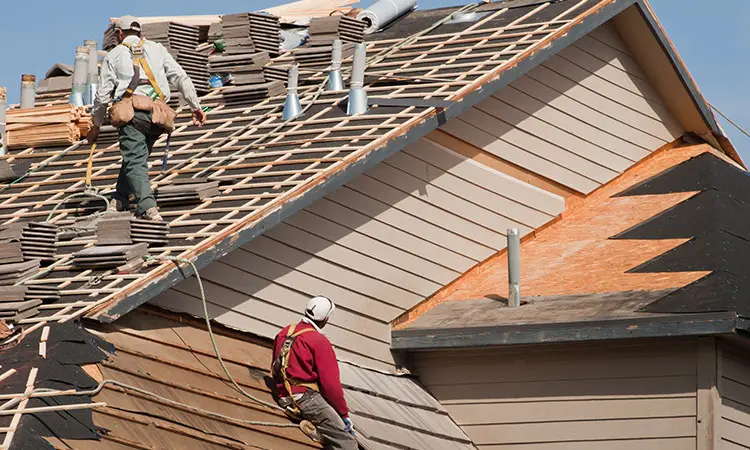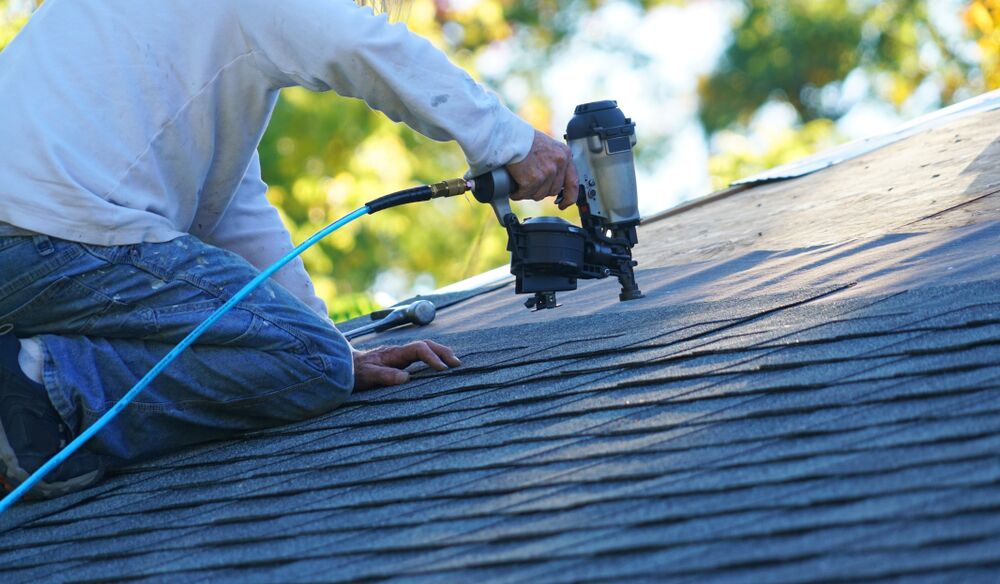Oahu Roofing: Dependable Roofing Solutions for Residences and Services
Understanding the Various Sorts Of Roofing Systems: A Comprehensive Overview for Homeowners
In the realm of homeownership, selecting the proper roofing style is a choice that lugs substantial implications for both performance and aesthetic appeal. With a selection of alternatives-- varying from the standard gable to the modern flat-- each kind provides special benefits and difficulties that ought to align with the home owner's environmental considerations and specific requirements. Understanding these differences not just help in making an informed selection however additionally influences long-term upkeep and energy effectiveness. As we check out the complexities of different roof covering kinds, it comes to be noticeable that dimension does not fit all; the ideal selection might stun you.
Gable Roofings
Saddleback roofs, characterized by their triangular shape, are amongst the most prominent roof covering designs due to their simpleness and performance in losing water and snow. This layout features 2 sloping sides that meet at a ridge, permitting for effective drainage and minimizing the risk of water buildup. The steep pitch typically related to saddleback roofs enhances their capability to deal with hefty rainfall, making them suitable for numerous environments.
In addition to their practical benefits, gable roofings supply aesthetic adaptability. They can be adjusted to various building designs, from standard to contemporary homes. The layout can additionally accommodate added attributes such as dormer home windows, which boost all-natural light and air flow in the attic room area.
Additionally, saddleback roofs offer adequate area for insulation, adding to power efficiency. Property owners can pick from a variety of roof covering products, including asphalt tiles, steel, and ceramic tiles, further improving personalization choices.
Regardless of their advantages, gable roofs may require added assistance in locations vulnerable to high winds or hefty snowfall. Overall, the gable roofing continues to be a favored choice as a result of its blend of performance, durability, and aesthetic appeal.
Flat Roofs
Flat roofing systems are frequently identified for their minimalist design and functional applications, especially in industrial and industrial settings (oahu roofing). These roof coverings include a virtually horizontal or straight surface area, which enables simple building and construction and versatile space application. While they may do not have the visual charm of pitched roofings, flat roofings supply various benefits, especially in urban settings where optimizing area is critical
Among the main advantages of level roofs is their availability. Homeowners can make use of the roofing system area for various functions, such as roof yards, balconies, or photovoltaic panel installments. Furthermore, level roof coverings are usually extra economical to install and preserve contrasted to their sloped counterparts, as they need less materials and labor.
Typical products utilized for level roofs include built-up roof (BUR), customized bitumen, and single-ply membrane layers, each offering unique advantages. In general, flat roofs offer as a functional and versatile selection for several homeowners and businesses alike.
Hip Roofing Systems
Hip roof coverings are characterized by their sloped sides that merge at the top, creating a ridge. This style is distinctive from gable roofing systems, as all 4 sides of a hip roofing slope downwards toward the walls, offering an extra secure framework. The angle of the slopes can differ, permitting flexibility in architectural visual appeals and functionality.
One of the primary advantages of hip roof coverings is their capacity to stand up to heavy winds and unfavorable weather. The sloped surface areas make it possible for much better water drain, reducing the danger of leakages and water damage. Additionally, hip roofings supply raised attic room room, which can be used for storage or perhaps exchanged livable areas.
However, creating a hip roofing can be more pricey and complicated than less complex roofing kinds, such as saddleback roofs. The additional product and labor involved in developing the inclines and making certain correct structural integrity can bring about greater expenses. In spite of these drawbacks, numerous house owners prefer hip roof coverings for their toughness, aesthetic allure, and capacity for power performance.
Mansard Roofs
Mansard roof coverings, often acknowledged by their special four-sided layout, feature two inclines on each side, with the lower slope being steeper than the upper. This building style, stemming from France in the 17th century, is not only aesthetically appealing yet useful, as it maximizes the functional space in the top floors of a building. The steep lower slope enables even more clearance, making it a perfect selection for lofts or attic rooms, which can be transformed right into living spaces.
Mansard roofings are identified by their flexibility, accommodating numerous architectural styles, from conventional to modern-day. They can be constructed with different materials, including asphalt shingles, slate, or metal, giving homeowners with a series of alternatives to suit their choices and budgets. In addition, the style enables for the assimilation of dormer home windows, boosting all-natural light and ventilation in the top degrees.
Nevertheless, it is essential to consider the prospective disadvantages. Mansard roofings might call for more maintenance as a result of the complexity of their style, and their steep slopes can be challenging for snow and rainfall overflow. Overall, mansard roof coverings incorporate sophistication with usefulness, making them a prominent choice among home owners seeking unique architectural features.
Dropped Roof Coverings
As homeowners significantly look for simpleness and functionality in their building styles, dropped roofing systems have actually emerged as More Info a prominent option. Defined by a single sloping airplane, a shed roof offers a minimalist visual that complements various home styles, from modern to rustic.
One of the main benefits of a shed roof covering is its simple building, which commonly equates to decrease labor and material costs. This style permits for effective water drain, decreasing the threat of leaks and water damage. In addition, the upright slope provides ample area for skylights, enhancing natural light within the interior.
Dropped roof coverings additionally offer flexibility in terms of use. They can be efficiently incorporated into enhancements, garages, or outdoor frameworks like sheds and structures. Additionally, this roof covering style can accommodate numerous roof covering materials, including steel, asphalt shingles, and even environment-friendly roofs, aligning with eco-friendly efforts.
Nonetheless, it is necessary to think about local climate conditions, as hefty snow tons might require adjustments to the roofing's angle or framework. On the whole, dropped roof coverings present a sensible and aesthetically pleasing option for property owners wanting to maximize performance without compromising style.
Conclusion


Gable roofing systems, defined by their triangular shape, are among the most prominent roof styles due to their simplicity and performance in shedding water and snow. oahu roofing. The high pitch typically linked with gable roofings improves their capability to deal with hefty precipitation, making them appropriate for different environments
While they may do not have the i thought about this visual charm of pitched roofings, level roofing systems supply numerous benefits, especially in urban atmospheres where optimizing area is important.
